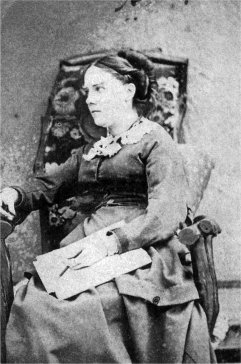Theresa Yelverton facts for kids
Theresa Yelverton (born Maria Theresa Longworth; around 1827–1833 – 13 September 1881) was an English writer. She became well-known because of her part in the Yelverton case. This was a famous legal case in Ireland during the 1800s. The case was so important that it even changed the laws about marriages between people of different religions in Ireland.
Contents
Early Life and Education
Maria Theresa Longworth was born in Cheetwood, Manchester, Lancashire, England. She was the youngest of six children. Her father, Thomas Longworth, made silk. Her mother, Ann Fox, died when Theresa was young.
Theresa went to school in Boulogne-sur-Mer, France. She studied at a convent run by Ursuline nuns. She later became a Roman Catholic. After her schooling, she returned to her father's house in Smedley. They had some disagreements about religion.
She first met Major William Charles Yelverton in August 1852. They were on a ship in the English Channel. William Yelverton later became the 4th Viscount Avonmore in 1870.
After this meeting, Theresa finished her education in Italy. She heard Yelverton was in Malta. She wrote to him, and they started writing letters to each other. She then returned to England to care for her father, who was very ill. She was there in 1854.
Nursing During Wartime
Theresa Longworth worked as a nurse during the Crimean War. She was part of the Daughters of Charity of Saint Vincent de Paul. These nurses were also called the Sisters of Charity.
She met Yelverton again in 1855. This meeting happened at Galata Hospital in Constantinople. After the war ended, she visited the Crimea in March 1856. She was a guest of Charles van Straubenzee and his wife. Yelverton also saw her there at social events.
Legal Challenges and Marriages
After some years, Yelverton was sent to Edinburgh in early 1857. Theresa was staying there with a friend. Her friend was also a Catholic convert and a Sister of Charity named Arabella. Yelverton visited Theresa often. Their relationship became very close, like people who were engaged to be married.
Theresa Longworth took part in two marriage ceremonies with Yelverton.
- The first ceremony happened on 12 April 1857. It took place at Theresa's home in Edinburgh. Yelverton read from the Book of Common Prayer of the Church of England.
- The second ceremony was secret. It happened on 15 August 1857. This was in a Roman Catholic chapel near Rostrevor, County Down, Ireland. They exchanged vows in front of the altar. A priest named Bernard Mooney witnessed it.
Yelverton later said that Theresa did not believe either ceremony was a real marriage. He then married Emily Marianne Ashworth on 26 June 1858. She was the daughter of Charles Ashworth and the widow of Edward Forbes. A Scottish Episcopal Church minister performed this marriage.
Theresa found out about this marriage three days later. On 30 June, a Catholic priest showed the minister a copy of the certificate from the August 1857 Irish ceremony.
This led to Theresa asking the Edinburgh procurator fiscal for help. Yelverton was briefly held in Calton Jail because of a legal challenge to his marriage. The challenge was later dropped. Yelverton then asked a court to declare that he was not married to Theresa. More legal actions followed.
There were many trials. The most important one was Thelwall v. Yelverton. This trial took place between 21 February and 4 March 1861. The court decided that both of Theresa's ceremonies were valid marriages. However, on appeal, the Court of Session later said Theresa's marriage to Yelverton was not valid.
Near the end of the legal process, Theresa made a special request to the House of Lords in 1867. This was based on an old Scottish law. Theresa argued her case herself. However, the House of Lords denied her request. The court cases finally ended in 1868. It was believed that Yelverton used his influence with the House of Lords.
Impact of the Legal Battle
The long legal fight made both Theresa and Yelverton very well-known. Yelverton lost his job as an officer in the Royal Artillery. He was put on half pay, meaning he received only part of his salary.
Later Life and Travels
After the court cases, Theresa traveled a lot. She earned money by writing about her journeys. Francis Farquhar wrote that she spent the summer of 1870 in Yosemite. There, she stayed with the Hutchings family. She also met John Muir, a famous naturalist. He tried to avoid her, but she learned enough about him to use him as a character. She turned him into "Kenmuir," the hero of her novel.
Death
Theresa Yelverton died in 1881. She passed away in Pietermaritzburg, Natal, South Africa.
In Literature
Two novels from the 1860s were based on Theresa's story and the court cases:
- Gentle Blood: Or, the Secret Marriage (1861) by James Roderick O'Flanagan.
- A Wife and not a Wife (1867) by Cyrus Redding.


